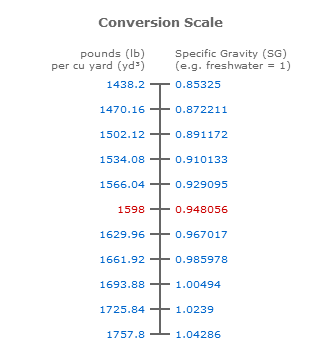

Or try our curved tanks or corner tanks calculators further down the page.Īquarium Volume Calculator FAQs Why Might I Need To Know The Volume Of My Tank? Just click outside of the input fields to see the volume update.Īquarium Volume Calculator For Tanks With Straight LinesĬhoose the shape that closest resembles your tank. Our aquarium volume calculator will automatically calculate the volume once you have finished filling in your measurements.

Just weigh anything that is going into your tank, and enter an overall total weight. This step is optional but makes for a more accurate volume calculation.

Any additional instructions are shown under the appropriate field. Use the diagram against each calculator to help you enter your measurements. Choose from our aquarium volume calculators for tanks with straight lines, curved tanks, or corner tanks below.
#Water volume calculator how to
How To Use The Aquarium Volume Calculator
#Water volume calculator full
The formula has the entire density list built-in, including the full range between each Centigrade increment. With my approach, I only need to enter the initial and final temperatures and the initial volume. There's nothing wrong with that, but it requires you having your density sheet always ready, and making sure you interpolate and copy the right density figure. However, you will need to take the initial temperature, check the density sheet, enter the density number, take the final temperature, check the density sheet again and enter the density, enter the initial volume, and then do your calculation to determine your new volume. It seems to be working correctly, but again, I'm curious if my method of calculating new volumes, based on change in temp is off.Ĭlick to expand.Hi Zoltan.I don't see any problem with your calculation itself. It's a work in progress, and the result of Covid boredom. Would the above formula not work? You have me second guessing myself now since my formula seems so much more simple then yours.Īttached is a screen shot of the top of my spread sheet. It also calculates my strike temp, etc, based on grain temp, etc. I have created a temperature chart that auto populates the density based on the temp I select. Since I haven't known the mass, I've subbed in the mass formula (M=DV) for M, based on the information of the liquid at the previous temperature to create this: To calculate the new volume of my water at a different temperature I have used the formula V= M/D. I've never been part of a forum before.Īnyways, I am working on dialling in my system, and have been wanting to find my dead spaces, etc, and mass of final wort, etc, so I can more accurate add water, and track my efficiency along the way. I don't know if I'm 'foruming' correctly, I literally joined this forum to reply to your post. This works for water, and I assumed that the shrinkage of wort is fairly close to that of water. Just copy and insert this formula in a spreadsheet directly, add the values for V1 and T, and it will give you the adjusted volume at 68 F (V2).įor example, if you insert 20.0 Liters for V1, 212 F for T, then the adjusted volume for 68 F will be 19.2 liters, a shrinkage of 0.8 liters. T = temperature at which V1 was measured in F. V2 = adjusted volume of wort at 68 F in same unit as V1. V1 = measured volume of water/wort (any unit of volume will work: e.g. Since I couldn't find a direct equation for adjusting the volume of water/wort anywhere, I worked on water density equations, and developed a 6th order polynomial equation that will calculate the adjusted volume of wort/water to a base of 68 F, accurate to the fourth decimal.


 0 kommentar(er)
0 kommentar(er)
